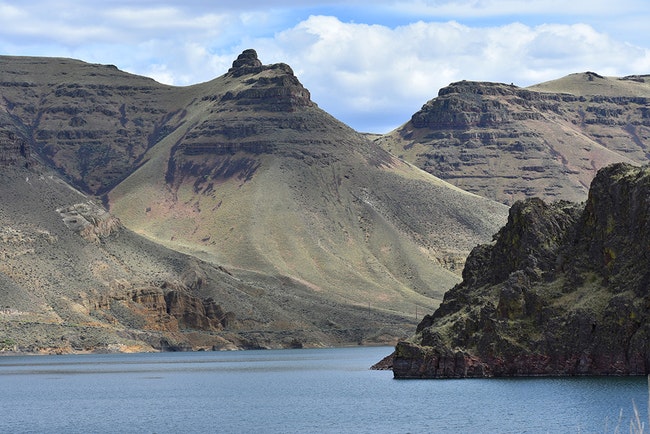
The Owyhee Irrigation District issued its new allotment for water users recently. (The Enterprise/FILE)
NYSSA – Mother Nature may have come to the rescue for area farmers dependent on irrigation water in the nick of time.
Kind of.
Thanks to a good runoff and improving stream flows area reservoirs are slowly recharging but the long-term irrigation picture still includes an early shutoff for agencies such as the Owyhee Irrigation District.
The Owyhee Irrigation District set a new allotment for irrigation water users recently at 2.1-acre feet. Last year the Owyhee Irrigation District cut its water allocation from 4-acre feet to 3-acre feet. An acre foot of water is enough water to flood an acre 1 foot deep.
While lower than 2021, the new allotment for Owyhee customers is still far better than earlier estimates that projected a possible allowance below 2-acre feet.
The amount of snow in some portions of the Owyhee Basin proved beneficial and it has melted and triggered runoff into streams at a higher rate than expected, said Clancy Flynn, manager of the district.
“We doubled and maybe tripled our runoff from last year so we actually had a lot better flow this year than last year,” said Flynn.
Flynn said runoff this year, compared to 2021, is significantly better but still far below normal. During a normal year, between 350,000 to 400,000-acre feet of water flows into the Owyhee Reservoir. By March 31 last year, 123,000-acre feet of water spilled into the Owyhee Reservoir.
“This year we had 218,000-acre feet of come in,” said Flynn.
That number, though, will not hold and Flynn cautioned it will likely not be an exceptional water year.
“It’s nice but I don’t know if it is a game-changer. It could have been better,” he said.
A quick glance at area reservoir levels shows some improvement in terms of water storage.
In early March, for example, Warm Springs Reservoir stood at 11% full. Last week the water storage capacity at Warm Springs improved to 15%.
Beulah Reservoir last week stood at 37% full – up from 29% full in early March – while Bully Creek Reservoir was at 53% full, up from 45% a month ago.
The Owyhee Reservoir climbed from 25% full a month ago to 41% full last week. Water managers like to see the Owyhee between 35% and 40% full going into the spring runoff period. About 35,000 acres of farmland rely on the Owyhee Reservoir.
The snow water equivalent – or the amount of liquid water contained within snowpack when it melts – for the Owyhee Basin last week was 52%. That’s a short-term good sign but long-term – because there is less snow now in the higher elevations – stream flows will be much lower in the summer, said Flynn.
The importance of irrigation water for the local area is huge.
More than 170,000 acres in the county are irrigated, powering the local area’s $80 million onion industry and other cash crops such as alfalfa.
The potential scarcity of irrigation water already made an impact with some area farmers, said Flynn, with some producers switching to crops such as wheat that are less dependent on irrigation.
The water outlook for the district is better, but it won’t change the long-term picture for its patrons, said Flynn.
“We will still end up shutting down early but I don’t know how early,” said Flynn.
News tip? Contact reporter Pat Caldwell at [email protected] .
Previous coverage:
Water outlook in Malheur County remains bleak despite spate of recent storms
EXCELLENCE IN JOURNALISM – Available for $5 a month. Subscribe to the digital service of the Enterprise and get the very best in local journalism. We report with care, attention to accuracy, and an unwavering devotion to fairness. Get the kind of news you’ve been looking for – day in and day out from the Enterprise.




